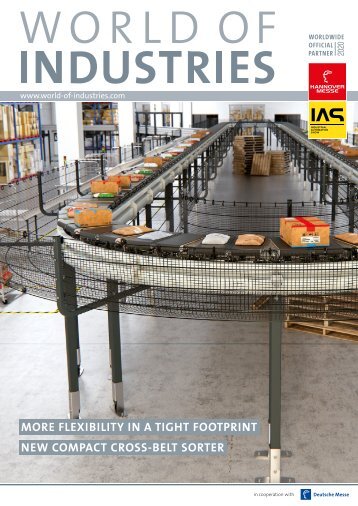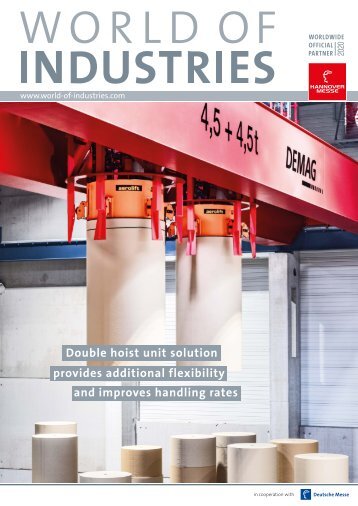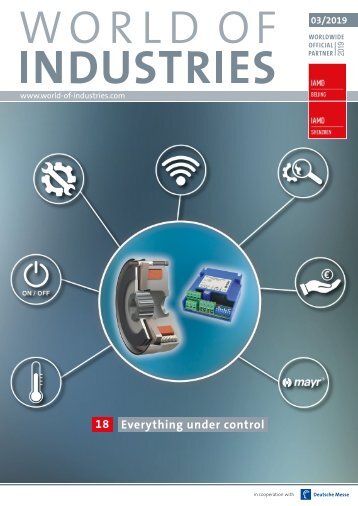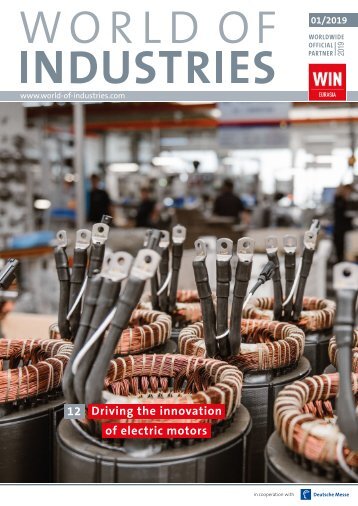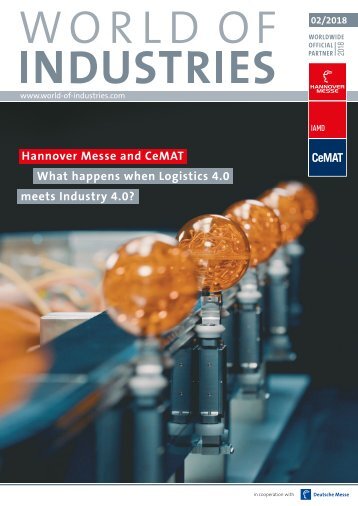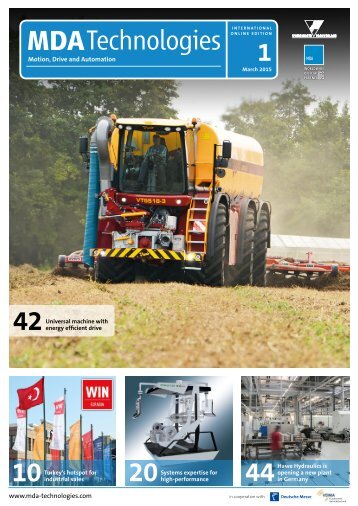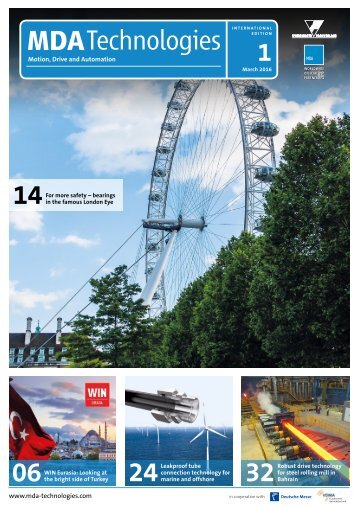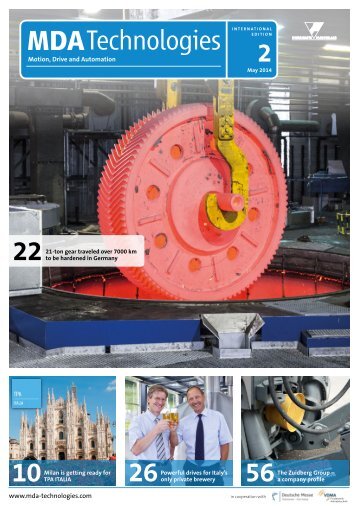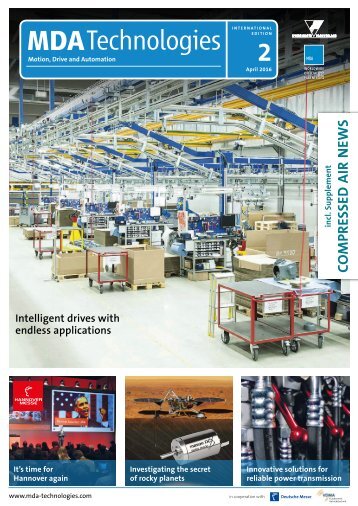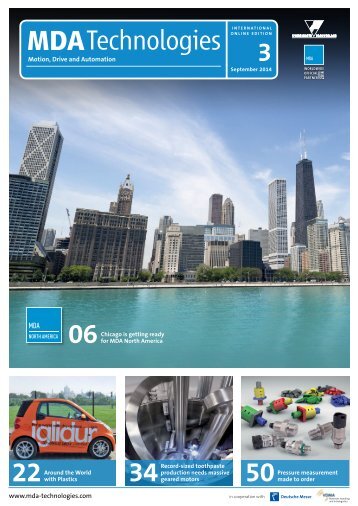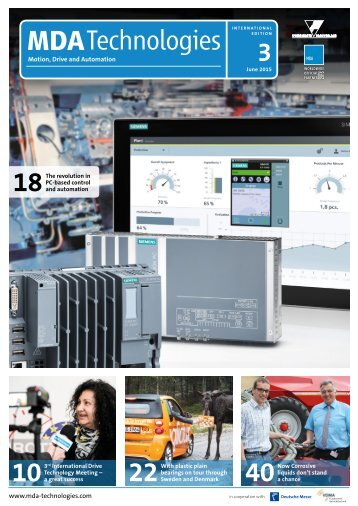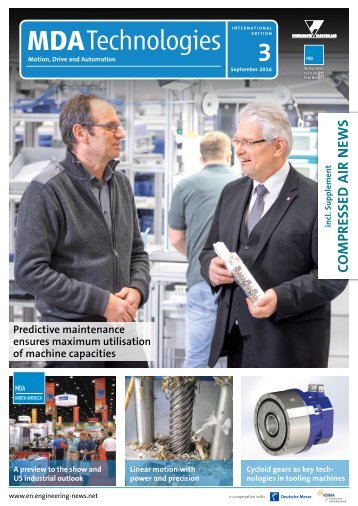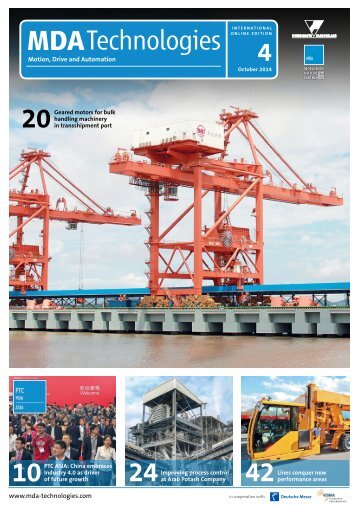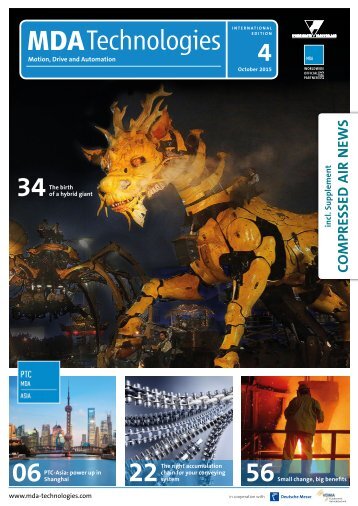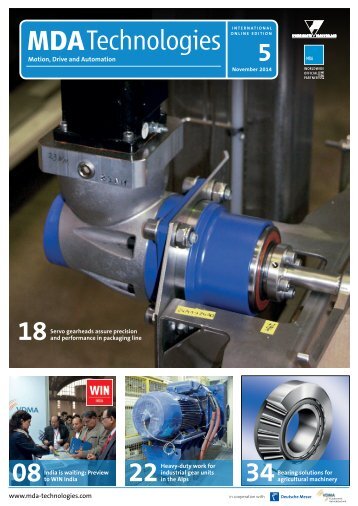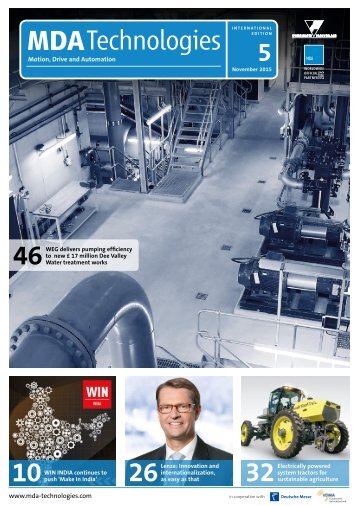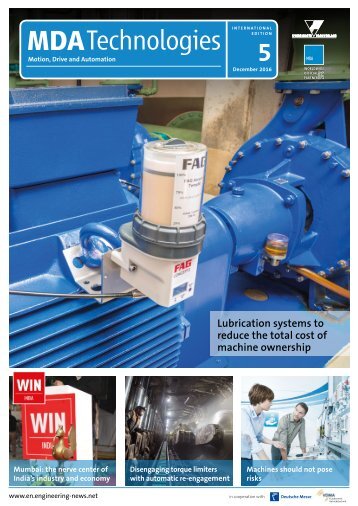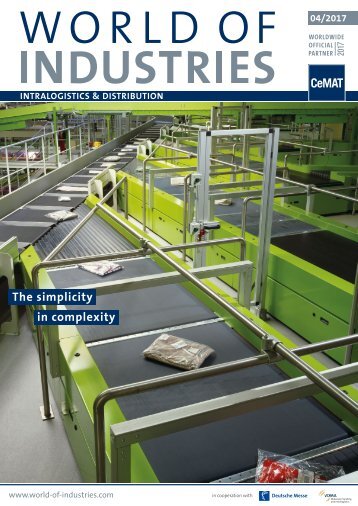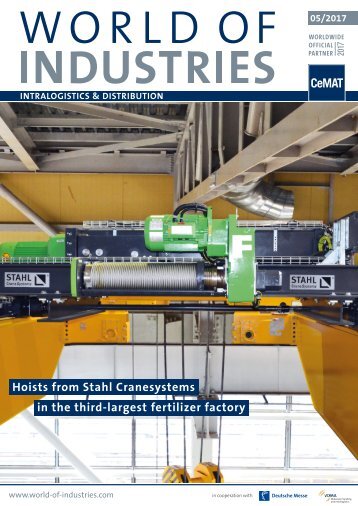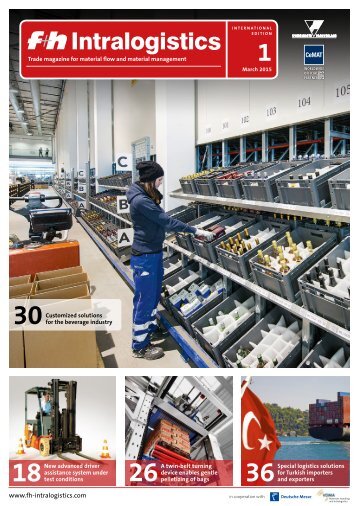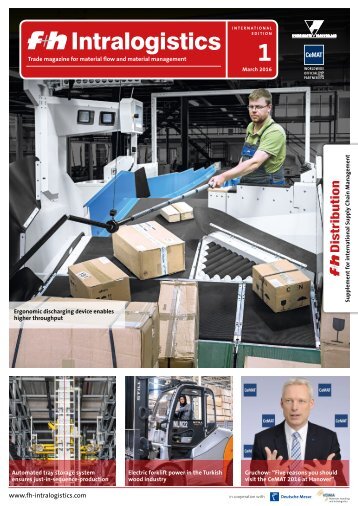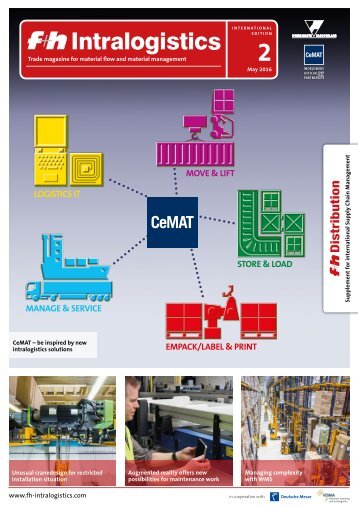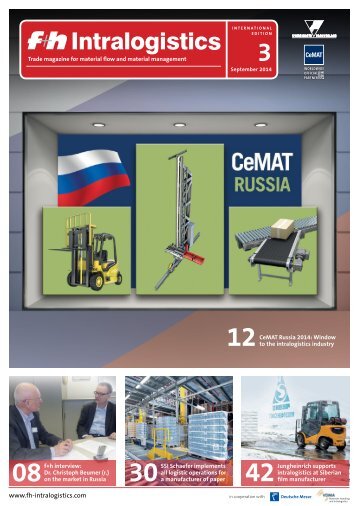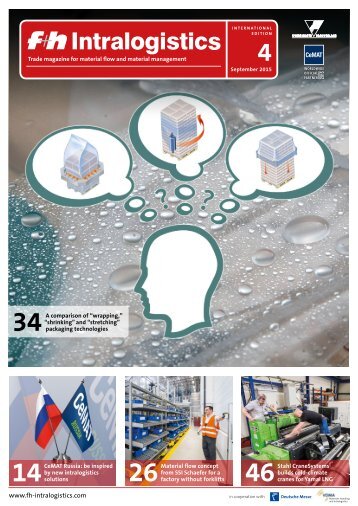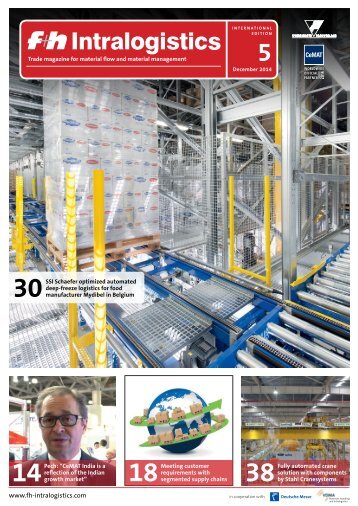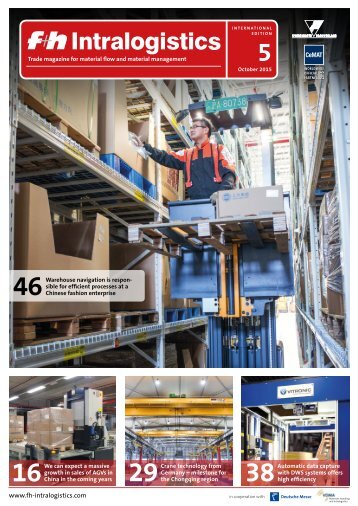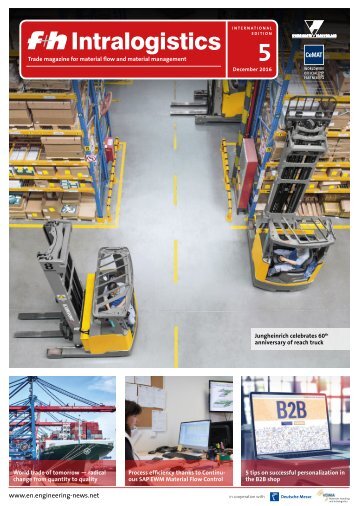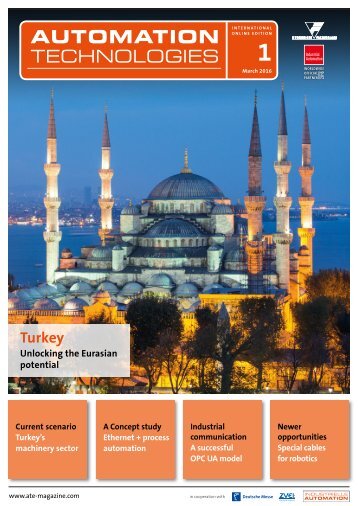WORLD OF INDUSTRIES 02/2018
- Text
- Industries
What next for North
What next for North America’s trade relations ? NEWS AND MARKETS Author: Sushen Doshi, International Correspondent for World of Industries 8 WORLD OF INDUSTRIES 2/2018
Nafta negotiations could result in a new trade deal for the North American bloc or it could start a global trade and tariff war, the direction at which America and its trading partners are heading is completely unpredictable. When negotiations for Nafta or North American Free Trade Agreement began in 1991, the goal for all 3 countries was integration of developed, high-wage economies like the U.S and Canada with developing economies like Mexico. The expected outcome was that free trade would provide new jobs and opportunities along with stronger and steadier economic growth to Mexico. Whereas for United States and Canada, Mexico was seen as a promising new market for exports and also a low cost investment destination. When Nafta came into force in 1994, the tariffs, duties and quantitative restrictions on trading of goods across borders were progressively eliminated. The deal focused on liberalization of trade and boosting the manufacturing competitiveness of American and Canadian companies, it also sought to protect intellectual property, establish dispute-resolution mechanisms and implement labor and environmental safeguards. Nafta fundamentally reshaped North American economic relations. Within the first 20 years of Nafta’s implementation, regional trade increased sharply from $ 290 billion in 1993 to more than a $ 1.2 trillion in 2016. US-Mexico trade Mexico is the USA’s third-largest trading partner in terms of goods, with $ 525 billion in total two-way trade recorded during 2016. With more than $ 230 billion in exports and $ 294 billion in imports from Mexico, America was left with a trade deficit to the tune of $ 63 billion in 2016. These numbers recorded a further rise in 2017, with America exporting more than $ 240 billion and importing more than $ 315 billion worth of goods from Mexico, creating a trade deficit more than $ 70 billion. America’s top exports include mechanical engineering products and machinery ($ 42 billion), electrical machinery ($ 41 billion), automobiles and commercial vehicles ($ 21 billion), plastics ($ 16 billion) and agricultural products ($ 18 billion). In terms of American imports, top import categories were: Automobiles and components ($ 75 billion), electrical machinery ($ 62 billion), mechanical engineering products and machinery ($ 51 billion), optical and medical instruments ($ 13 billion) and agricultural products ($ 23 billion ). Nafta renegotiation Picture: fotolia Despite delivering impressive trade numbers, the Nafta deal has been a perennial political target. In 2016 presidential campaign, Donald Trump criticized the pact for facilitating the shifting of U.S. manufacturing operations and jobs to Mexico. Trump’s election campaign also witnessed a series of derogatory accusations targeted at Mexican immigrants. He has frequently insisted on constructing the border wall along the US-Mexican border to regulate trade and immigration between the two nations, and that Mexico will pay for it. In response to the outrageous border wall proposal, Mexican President Peña Nieto has firmly stated that his country will not pay for the WORLD OF INDUSTRIES 2/2018 9
- Page 1 and 2: 02/2018 www.world-of-industries.com
- Page 3 and 4: The new “Made in Germany”? EDIT
- Page 5 and 6: www.twmt.tw Taiwan Smart Manufactur
- Page 7: New Managing Director at Wittenstei
- Page 12 and 13: Mexican manufacturing takes the cen
- Page 14: NEWS AND MARKETS on improving its l
- Page 17 and 18: With ‘Integrated Industry - Conne
- Page 19 and 20: ots, called ‘Cobots’ or Collabo
- Page 21 and 22: Mount-Coffee-Dam At the Mount Coffe
- Page 23 and 24: Balluff IO-Link masters collect the
- Page 25 and 26: nical data of a plant, but also its
- Page 27 and 28: GMR Tooth Sensor Module Motor spind
- Page 29 and 30: Puerto Princesa Subterranean River
- Page 31 and 32: IP67 I/O Module connects serial int
- Page 33 and 34: Krones’ Sleevematic TS labelling
- Page 35 and 36: necessary contributors of driveline
- Page 37 and 38: load range and at low speeds. They
- Page 39 and 40: 02 Start window of the abovemention
- Page 41 and 42: 01 Its purely electromagnetic diver
- Page 43 and 44: WORLD OF INDUSTRIES 2/2018 43
- Page 45 and 46: Mitsubishi Electric’s AutomationM
- Page 47 and 48: Track-guided AGVs facilitate agile
- Page 49 and 50: Enough time to focus on the core bu
- Page 51 and 52: Logistics 4.0 meets Industrie 4.0 2
Inappropriate
Loading...
Mail this publication
Loading...
Embed
Loading...


